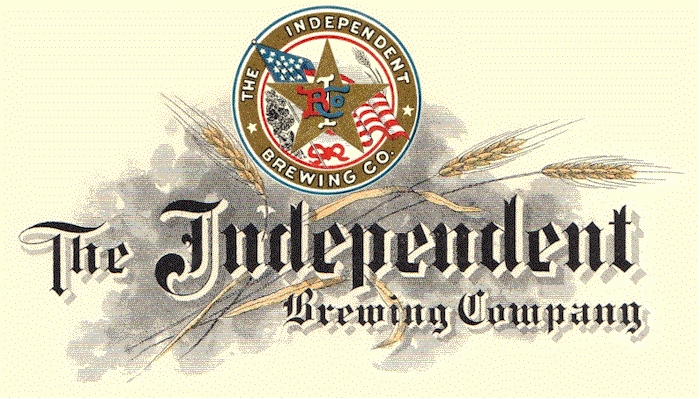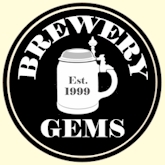
Independent Brewing Company
of Seattle (1902-1915)
Old German Lager Brewing Company (1916-1918)
Old Lager Brewing Company (1918-1924)

|
In 1902, Samuel S. Loeb and other business associates who had been
with him in his Tacoma brewery, laid plans to open a brewery in
Seattle. As detailed in his biography,
the American born, Loeb, came to Seattle in 1902, three years after
the closure of his Milwaukee Brewery - a
branch brewery of the
Pacific Brewing & Malting Co.
Brewery construction was well underway when an
arsonist struck. On 26 August, 1902, The Seattle Star ran a
story with these headlines: "Fierce Fire At South Seattle--Incendiaries Apply the Match
to new Independent Brewery Plant--A $50,000 Fire This Morning--Establishment
Just Ready for Operation."
The arsonist was never caught, so it was never
determined if the action was anti-Semitic. However, Loeb and his
partners were the only Jewish brewers in the Pacific NW brewing
industry.
In spite of this major setback the investors regrouped
and rebuilt the plant. By December, 1902, the brewery commenced
brewing, with the
process overseen by plant superintendent, J. Henry Beckman,
who had previously held this position at the owner's
Milwaukee Brewery in Tacoma. He was
assisted by another brewer, Anton Dolenz, a recent arrival from
Austria.
"Articles incorporating the Independent Brewing Company
with a capital stock of $150,000 were filed yesterday afternoon
at the office of the county auditor. The papers aresigned by
Samuel S. Loeb, Herman Klaber, and Ben Moyses."
Samuel Loeb served as president, and his
brother-in-law, Albert Weinberg, was vice-president, with Benjamin
Moyses serving as sec./treas. Their millionaire partner, Herman
Klaper - "the Hop King" - left the company prematurely when he went
down with the Titanic on her ill-fated, maiden voyage.
The brewery was located at 4202 8th Ave. So., what is now Airport
Way and Adams St. - south of the Seattle Brewing & Malting plant in
Georgetown. The photo (above) was taken immediately after the plant
was completed. As was common practice of the time, much artistic
license was taken in depecting the brewery. Below is drawing
that shows major improvements since the 1902 construction, however
the drawings are often exagerated and the plant was not actually as
deep as it appears.
Their other brand, "Premier Pilsner" was a bottled beer meant for
1st class bars & resturants, as well as the home market.
Beer trays were also popular promotional items given to their
accounts. The tray below has the Brewery's logo, and touts "Premier
Pilsner Beer. The tray futher below was another stock
tray, that had a center area free for a brewery's text and/or logo.
This would have been more economical than commissioning a tray with
original artwork designed specifically for their brewery.
In promotional ads the company stated that: "It's the sterilized air in
the fermenting that makes our beer so delicious."
"Only six different trays are currently known that were issued
by the Independent Brewery - including "Falstaff", "A Helping Hand" and "the
Cavalier" shown
further below.
The brewery flourished in spite of the major competition from
Seattle Brewing & Malting's Rainier Beer. In June of 1910 their
brewmaster, J. Henry Beckman, formulated his Old German Lager
calling it the "Fatherland Beer," with the slogan: "Prosit! Es Giebt
Kein Kopeweh," which means - "Good Health! It won't give you a
headache."
To introduce the new brand the brewery ran half page ads in
northern California newspapers. (click on the image to enlarge)
Headaches or not, Old German Lager was well received in Seattle
and the surrounding areas, and became their "flagship brand." It even found favor with the beer
drinkers of San Francisco and Portland.
By 1912, Old German Lager was being bottled and distributed by the
Chas. F. Wagner Co. in the Bay City, and in Portland by Rose City
Importing Company. It's curious that the Portland glass (above)
doesn't mention the Independent Brewing Co.
The original bottle label shown below and on the tray, became a
registered trademark in April, May and June of 1910 - in Oregon,
California, and Washington, respectively. Of the six trays issued by the brewery, the tray showing a bottle of
beer with the "brown label" is the only tray that didn't use a stock
image.
This label's graphics was also used on
the etched glasses (top-left above). In May of 1912, Loeb's new label was introduced (below right) with
brighter colors, different graphics, but identical
verbiage. That label also suggests that bottles greater than 22
ounces may have been used.
During this period approximately 70% of
the output of Seattle breweries was given over to draft beer, which was
dispensed in saloons. The remaining 30% was bottled for resturant
and home
consumption. |
|
|
|
|
|
|

|
Independent's parent company, Seattle Brewing & Malting, among others, chose to make the move to California believing that national prohibition would never be adopted. Loeb made the same choice, but rather than raise funds for the construction of a new brewery, he chose to contract for his beer and bottle it himself. In the last few days of December, 1915, just days before Washington State prohibition took effect, Loeb ran this ad in the Seattle Daily Times, showing his new plant and giving instructions on how to continue getting his beer. State law prohibited the manufacture of beer but not its consumption. Consummers were allowed a maxium of 12 quarts of beer every 20 days (or 2 qts. hard liquor). Unfortunately for Loeb this loop hole was closed 18 months later when on July 1, 1917, the "Bone Dry" ammendment was passed which forbade the shipment of intoxicating liquors of any kind into "dry" states.
The plant depicted in the Dec. 1915 ad above was not "...the New Home of Old German Lager." It was actually the plant of the Oakland Brewing & Malting Company, as can be seen on their letterhead below.
In fairness to Loeb this may not have been marketing hype. The January 1, 1916, edition of The Brewers' Journal published this article:
Loeb's use of the Oakland Brewery's image would suggest that he bought an interest in that company. Actually, Loeb & Moyses had taken part of the Oakland plant under lease, and sent their superintendent, J. Henry Beckman, to Oakland to brew Old German Lager for them. Beckman would later assume full charge of the Oakland Brewing & Malting Co. plant.
The Old German Lager
Brewing Company
|

Old Lager Brewing Co. letterhead ca.1918
|
By early 1918 the anti-German sentiment from the war in Europe forced Loeb to make a business decision. On the 21st of May he testified before Judge E. P. Morgan that San Franciscans have refused to buy "Old German Lager" because of its Teutonioc middle name. Consequently the judge authorized the corporation to change its name to Old Lager Brewing Company. The brewery's brand was then changed to "Old Original Lager" effective May 15, 1918. The appearance of the bottle label remained mostly the same but for the revised wording and removal of the German soldiers, plus they added a wooden sign specifing "The Brown Label."
When national Prohibition took effect in January of 1920, many
brewers attempted to keep their plants running by producing soft
drinks and/or non-alcoholic cereal beverages called near-beer.
In San Francisco, the Acme, Milwaukee,
Rainier,
Tacoma and John Wieland breweries chose to keep their plants
running with both product lines.
However, demand wasn't great and the firm struggled. By 1924 the Old Original Lager Brewing Co. had closed, and Samuel Loeb retired to Los Angeles to become a real estate broker.
April of 1933 saw the repeal of Prohibition and the return of beer production. While Loeb's contract brewing business was finished, the familiar beer label soon returned. In 1935, the San Francisco Brewing Corp. copied Loeb's 1916 label, making only subtle changes.
|
![]()
|
ACKNOWLEDGEMENTS
For any comments, additions, or corrections - 
All
contents including images are copyright by BreweryGems.com |